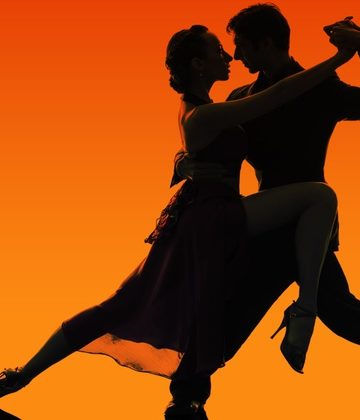The Jive originated in the United States in the 1930s and refers to a style of ballroom dancing included in DanceSport categories of competition. African Americans began performing a series of steps to Swing and Rock & Roll music and therefore created what we know today as the Jive.
Sequence dancing is a form of dance in which a preset pattern of movements is followed, usually to music which is also predetermined. Sequence dancing may include dances of many different styles such as Ballroom Dances, which move round the floor, as well as Line, Square and Circle dances.
Flamenco is a professionalized art-form based on the various folkloric music traditions of southern Spain in the autonomous communities of Andalusia, Extremadura and Murcia. In a wider sense, it refers to musical traditions and more modern musical styles which have themselves deeply influenced by and become blurred with the development of flamenco over the past two centuries.
Exhibition Dancing is one of the three divisions of Ballroom Dance, along with Social Dancing and competitive dancing (DanceSport). Exhibition dancing is choreographed Ballroom Dancing, where movements and lines of a theatrical nature are used to enhance the atmosphere of a dance that is performed before an audience.
Zouk is a musical style originating from the Caribbean islands of Guadeloupe and Martinique and popularized by the French Antillean band Kassav' in the 1980s. Very rapid in tempo, the style lost ground in the 1980s due to the strong presence of Compas / kompa and kadans, the main music of the French Antilles. Today, zouk is the French Antilles compas (Kompa), also called zouk-love.
Brazilian zouk dance is a partner dance originating from Brazil. Also known as zouk-lambada, the dance is a descendant of lambada, the music & dance style that swept over the world like a storm in the late 1980's. Brazilian zouk is characterized by the dancers’ undulating bodies and the girls' flowing hair. Depending on the style of Brazilian zouk, you can see a close connection embrace and long graceful steps, strong hip movements, body isolations and upper-body torsions, wild spins and whip-like head movements. While the dance is often called sensual, it is not sexual or erotic. It is danced by people of all ages in night clubs, dance schools and events around the world!
Argentine Tango is a partner dance that developed over the last century in Argentina's capital city, Buenos Aires. It is very different from the Tango in International and American Style Ballroom Dancing. Argentine Tango is an interpretive, improvisational social dance that allows the dancers to develop a deep connection between themselves, the music, and the environment in which they are dancing.
The Maxixe, occasionally known as the Brazilian Tango or the Mattchiche, is a dance, with its accompanying music, that originated in the Brazilian city of Rio de Janeiro in 1868 at about the same time as the Tango was developing in neighboring Argentina and Uruguay. It is a dance developed from Afro-Brazilian dances (mainly the Lundu) and from European dances (mainly the Polka).








